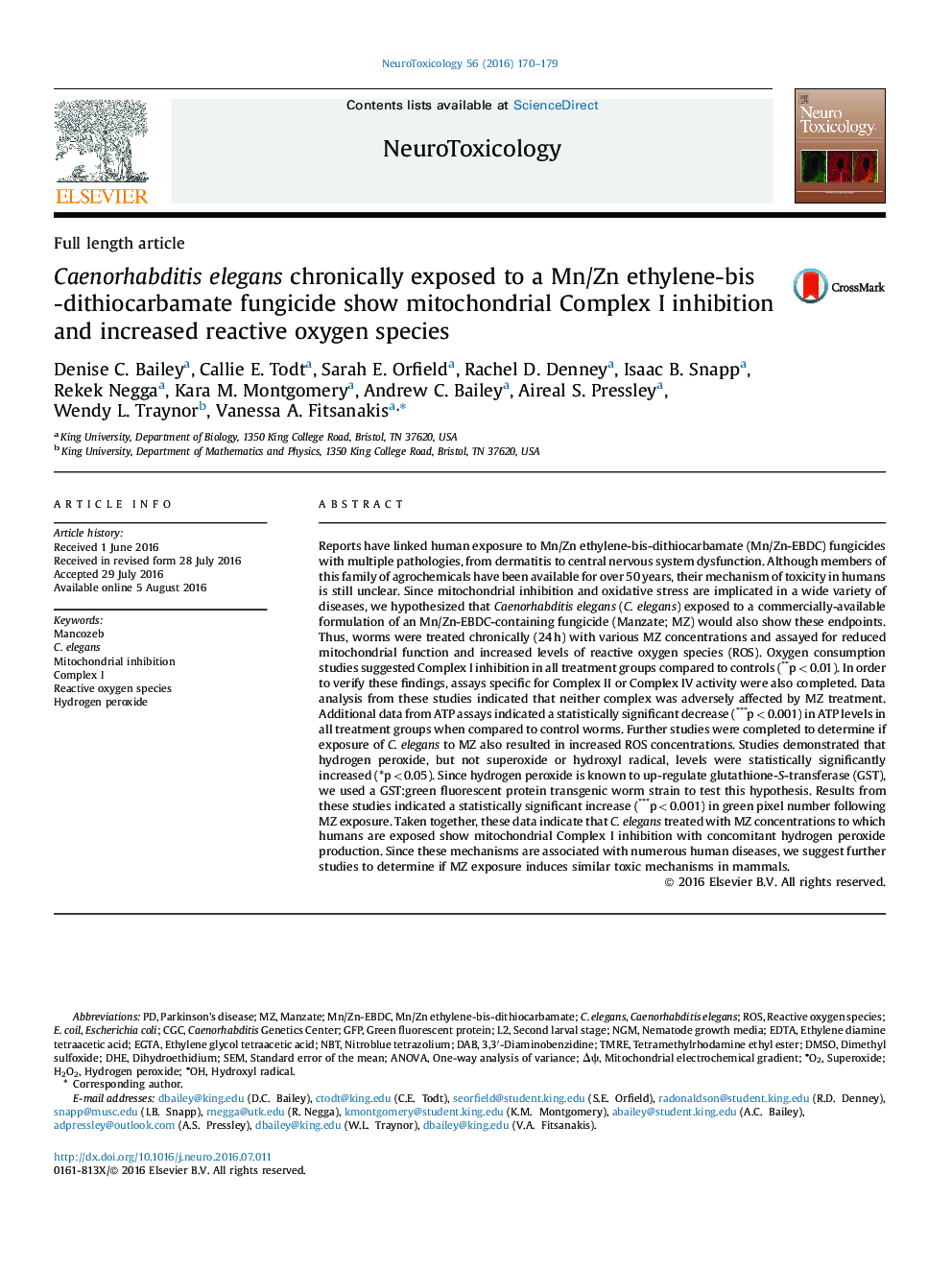| کد مقاله | کد نشریه | سال انتشار | مقاله انگلیسی | نسخه تمام متن |
|---|---|---|---|---|
| 2589424 | 1562038 | 2016 | 10 صفحه PDF | دانلود رایگان |

• C. elegans treated with the fungicide manzate show reduced mitochondrial respiration.
• The decreased respiration can be attributed to Complex I inhibition.
• Increased hydrogen peroxide, but not other reactive oxygen species, was detected.
• Increased glutathione-S-transferase levels were also observed.
• Mitochondrial inhibition and oxidative stress may be mechanisms of manzate toxicity.
Reports have linked human exposure to Mn/Zn ethylene-bis-dithiocarbamate (Mn/Zn-EBDC) fungicides with multiple pathologies, from dermatitis to central nervous system dysfunction. Although members of this family of agrochemicals have been available for over 50 years, their mechanism of toxicity in humans is still unclear. Since mitochondrial inhibition and oxidative stress are implicated in a wide variety of diseases, we hypothesized that Caenorhabditis elegans (C. elegans) exposed to a commercially-available formulation of an Mn/Zn-EBDC-containing fungicide (Manzate; MZ) would also show these endpoints. Thus, worms were treated chronically (24 h) with various MZ concentrations and assayed for reduced mitochondrial function and increased levels of reactive oxygen species (ROS). Oxygen consumption studies suggested Complex I inhibition in all treatment groups compared to controls (**p < 0.01). In order to verify these findings, assays specific for Complex II or Complex IV activity were also completed. Data analysis from these studies indicated that neither complex was adversely affected by MZ treatment. Additional data from ATP assays indicated a statistically significant decrease (***p < 0.001) in ATP levels in all treatment groups when compared to control worms. Further studies were completed to determine if exposure of C. elegans to MZ also resulted in increased ROS concentrations. Studies demonstrated that hydrogen peroxide, but not superoxide or hydroxyl radical, levels were statistically significantly increased (*p < 0.05). Since hydrogen peroxide is known to up-regulate glutathione-S-transferase (GST), we used a GST:green fluorescent protein transgenic worm strain to test this hypothesis. Results from these studies indicated a statistically significant increase (***p < 0.001) in green pixel number following MZ exposure. Taken together, these data indicate that C. elegans treated with MZ concentrations to which humans are exposed show mitochondrial Complex I inhibition with concomitant hydrogen peroxide production. Since these mechanisms are associated with numerous human diseases, we suggest further studies to determine if MZ exposure induces similar toxic mechanisms in mammals.
Journal: NeuroToxicology - Volume 56, September 2016, Pages 170–179